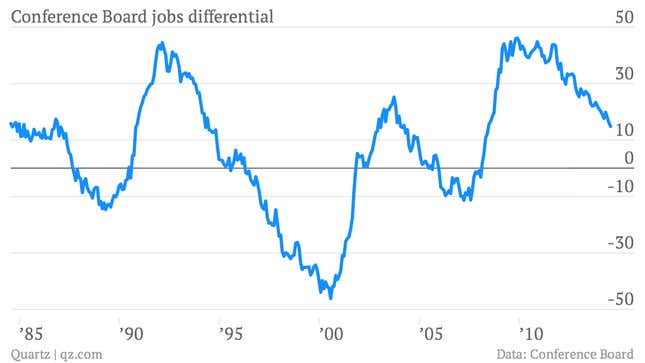It’s looking like July will be another big month for US job creation.
Wall Street economists expect the US Bureau of Labor statistics to report that the US economy pumped out 225,000 new jobs in July on Friday. If they’re right, that would be the sixth consecutive month that the economy produced more than 200,000 jobs. Here’s why things are looking pretty rosy:
Jobless claims
The weekly tally of applications for unemployment benefits that the BLS puts out has fallen dramatically lately, which is widely viewed as a sign of robust job creation. Importantly, the reading was quite low—303,000—during the week of July 11, when much of the survey activity used to compile the jobs report occurs.
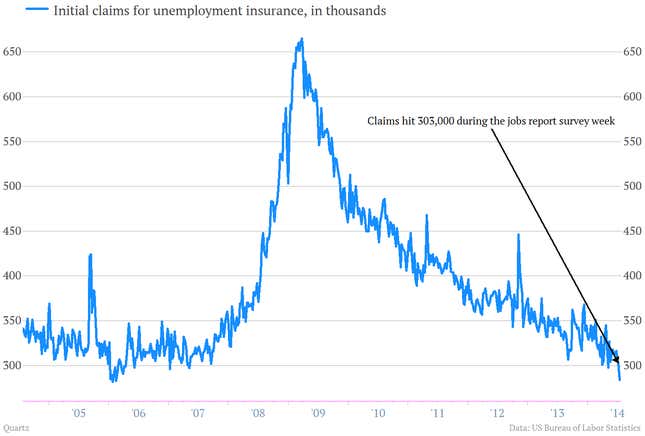
A peppy private sector
The payroll-processing company ADP’s monthly report on private sector job creation showed that the pace of new employment remained robust, even if it fell slightly from the fast pace seen in June. The predictive power of this report is somewhat dubious, but it’s one suggestion of ongoing improvement.
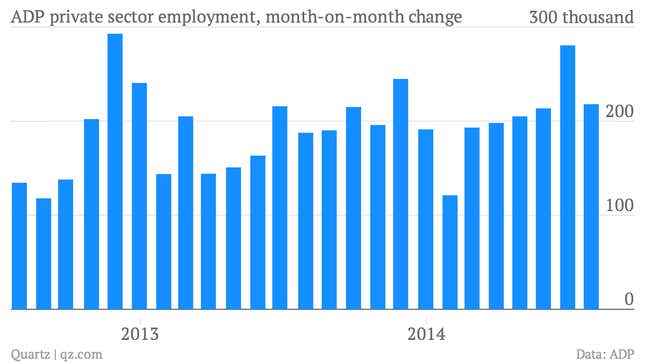
A lot of online job ads
The private research group the Conference Board has seen its gauge of new online job advertisements stay above 2.5 million, even if they slipped somewhat in July to 2.6 million, from 2.7 million in June. Still, job advertisements are seen as a leading indicator of hiring, so don’t be surprised if the bump in job ads in June translated into more hiring in July.
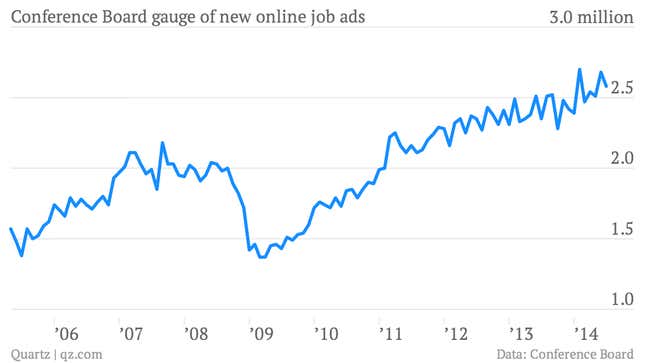
Small business hiring plans
A trade group’s gauge of small business hiring plans returned to a recent peak in July, in a sign that more companies could be ready to pull the trigger and add to headcounts.
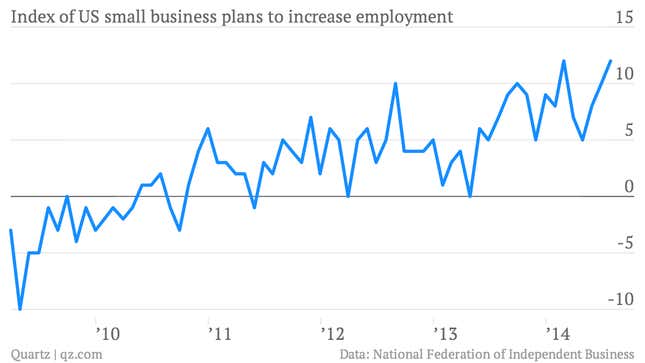
The jobs differential
The jobs differential is basically the difference between the number of people who said jobs were “hard to get” and those who said jobs were “plentiful” in a monthly consumer sentiment survey conducted the Conference Board. It’s considered a pretty good indicator of the job market’s health. The reading has been falling—a good sign—pretty steadily for months, and in February it dropped below 20 for the first time since the collapse of Lehman brothers in 2008. In June it fell to 17.1, the lowest reading since the financial crisis hit. And in July it hit a fresh post-crisis low of 14.8. This is an indication that job creation has been so robust that Americans are starting to notice. (That said, things aren’t great. Essentially Americans still feel jobs are about as hard to get as they were during late 2002 and early 2003, when the US was only starting to emerge from the jobless recovery that followed the recession of the early 2000s.)
